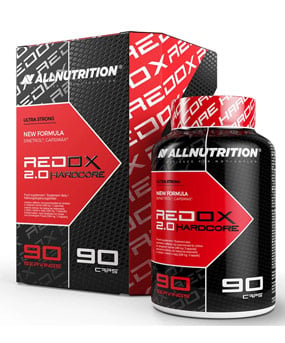Traktuje on o treningu wzmagającym efekty na diecie CKD.
Na dniach jeśli odpowiednio dużo osób będzie chciało tłumaczenia, przysiąde i przetłumacze, przynajmniej najważniejsze części.
Introduction
As the Cyclical Ketogenic Diet (CKD) becomes more popular among natural bodybuilders, a great many questions have arisen regarding any and all manners of topics. One of the primary has to do with exercise on a CKD. First and foremost, individuals want to know what types of exercise can and can not be sustained on a CKD. Secondly questions arise as to what is the optimal training structure to maximize either fat loss or muscle gains on a CKD.
To answer these two questions, a lot of topics have to be covered ranging from exercise biochemistry to the hormonal response to different types of exercise to the implications of a diet which does not contain
carbohydrates during the week. The goal of this article will be to discuss the CKD primarily for fat loss. For reasons beyond the scope of this article, the CKD is most likely not the optimal diet for mass gains.
What is the CKD?
The Cyclical Ketogenic Diet, CKD, is a general term to describe diets such as The Anabolic Diet (by Dr. Mauro DiPasquale) and BODYOPUS (by Dan Duchaine). While there are many variants, the most common structure for a CKD is 5-6 days of strict low carbohydrate eating (less than 30 grams per day) with a 1-2 day carb-loading period (where carbohydrate intakes is roughly 60-70% of the total calories consumed). The idea behind the CKD (which will be discussed in a later article) is to force the body to burn fat during the lowcarb days, while sustaining exercise intensity by refilling muscle glycogen stores during the weekend carb-load.
Some Basic Exercise Metabolism
To better understand the effects of a CKD on exercise performance, we have to look briefly at how different forms of exercise affect fuel utilization in the body. There are four potential fuels which the body can use during exercise: glycogen, fat, protein and ketones. Except under certain conditions (which will be mentioned when necessary), protein and ketones do not provide a significant amount of energy during exercise. Therefore this discussion will focus primarily on glycogen and fat use during exercise. To simplify this article, exercise will be delineated as either aerobic or anaerobic (which will include interval training and weight training).
Aerobic Exercise
Aerobic exercise is generally defined as any activity which can be sustained continuously for periods of at least three minutes or longer. Examples would be walking, jogging, cycling, swimming, aerobics classes, etc.
The primary fuels during aerobic exercise are carbohydrate (muscle glycogen and blood glucose) and fat (from adipose tissue as well as intramuscular triglyceride) (1,2). At low intensities, fat is the primary fuel source during exercise.
As exercise intensity increases, less fat and more glycogen is used as fuel. At some intensity, sometimes called the "Crossover point", glycogen becomes the primary fuel during exercise. (3) This point corresponds roughly with something called the lactate threshold. The increase in glycogen utilization at higher intensities is related to a number of factors including greater adrenaline release (3,4) decreased availability of free fatty acids (5), and greater recruitment of Type II muscle fibers (3,6,8). The ketogenic diet shifts the crossover (i.e. lactate threshold) point to higher training intensities (3) as does regular endurance training (4).
Under normal (non-ketotic) conditions, ketones may provide 1% of the total energy yield during exercise (8). During the initial stage of a ketogenic diet, ketones may provide up to 20% of the total energy yield during exercise (9). After adaptation, even under conditions of heavy ketosis, ketones rarely provide more than 7-8% of the total energy yield which is a relatively insignificant amount (10,11,12).
Generally, protein use during aerobic exercise is minimal, accounting for perhaps 5% of the total energy yield. With glycogen depletion, this may increase to 10% of the total energy yield, amounting to the oxidation of about 10-13 grams of protein per hour of continuous exercise (14). This is at least part of the reason that excessive aerobic exercise, especially under low glycogen conditions, can cause muscle loss while dieting.
Studies on ketogenic diets (2 to 6 weeks) find a maintenance (15, 16) or increase (17,18) in aerobic endurance during low intensity exercise (75% of maximum heart rate and below). At higher exercise intensities (around 85% of maximum heart rate which is likely above the lactate threshold), as glycogen use increases, performance decreases on a ketogenic diet (19).
Anaerobic Exercise
While anaerobic exercise refers generally to any activity which lasts less than three minutes or so, most individuals are interested in the effects of a CKD on weight training. However athletes involved in sports such as sprinting, or any activity lasting less than three minutes, will have the same considerations discussed in this section.
Weight training refers to any activity involving the use of heavy resistance which lasts less than three minutes (i.e. it is anaerobic). Weight training is slightly more complicated to discuss in terms of fuel use than aerobic exercise. For very short activities (less than 20 seconds), muscles use ATP (adenosine triphosphate) which is stored directly in the muscle. Activities lasting greater than 30 seconds will rely on the breakdown of glycogen (carbohydrate stored in the muscle). During anaerobic exercise, fat can not be used directly as a fuel (1).
Relatively few studies have examined the effects of carbohydrate depletion on resistance training. In fact no studies have studies the effects of a ketogenic diet on weight training performance. However since weight training can only use glycogen for fuel, we can logically conclude that carbohydrates are critical for weight training performance. In fact, this is the primary reason to insert the carb-loading phase of the CKD on the weekend: to sustain high intensity exercise performance while still deriving the benefits of ketosis. Other issues pertaining to glycogen levels and depletion appear below.
The Hormonal Response to Exercise
The hormonal response to exercise is important from two standpoints. First and foremost, manipulation of the type of exercise done on a CKD can affect how efficiently fat loss or muscle gain occur. Second, to most rapidly enter ketosis (which requires a depletion of liver glycogen), certain types of exercise will be more effective than others. The primary hormonal response to both aerobic and anaerobic exercise are discussed below.
There are several hormones which are affected by aerobic exercise depending on exercise intensity and duration. They primarily impact on fuel utilization.
Catecholamines:
Adrenaline and noradrenaline are both involved in energy production. The catecholamines raise heart rate and blood pressure, stimulate fat breakdown (lipolysis), increase liver and muscle glycogen breakdown, and inhibit insulin release from the pancreas (20). Both adrenaline and noradrenaline increase during aerobic exercise although in differing amounts depending on intensity of exercise. Noradrenaline levels rise at relatively low exercise intensities stimulating FFA utilization in the muscles but relatively low levels of liver and muscle glycogen breakdown.
Insulin:
During aerobic exercise, insulin levels drop quickly due to an inhibitory effect on it's release from the pancreas by adrenaline (20, 21). The drop in insulin allows free fatty acid release to occur from the fat cells during exercise. Lowering insulin is also important for establishing ketosis. Despite a decrease in insulin levels during exercise, there is an increased uptake of blood glucose by the muscle. An increase in glucose uptake with a decrease in insulin indicates improved insulin sensitivity at the muscle cells during exercise.
Glucagon:
As the mirror hormone of insulin, glucagon levels increase during aerobic exercise (20). Thus the overall response to aerobic exercise is pro-ketogenic in that it causes the necessary shift in the Insulin/Glucagon ratio to occur.
Thus the overall response to aerobic exercise is to decrease the use of glucose and increase the use of free fatty acids for fuel. This is beneficial from the standpoint of establishing ketosis, as will be discussed in greater detail below.
Weight training affects levels of many hormones in the human body depending on factors such as order of exercise, loads, number of sets, number of repetitions, etc. The primary hormones we are interested in which are affected by weight training are the androgens (primarily testosterone, growth hormone and IGF-1. With the exception of testosterone, the hormonal response to weight training primarily affects fuel availability and utilization (22).
Growth hormone (GH):
GH is a peptide hormone released from the hypothalamus in response to many different stimuli including sleep and breath holding (23). Although growth hormone is thought to be muscle building, at the levels seen in humans, it's main role is to mobilize fat and decrease carbohydrate and protein utilization (24).
The main role of GH on muscle growth is most likely indirect by increasing release of Insulin-like Growth Factor 1 (IGF-1) from the liver (24). The primary stimulus for GH release with weight training appears to be related to lactic acid levels and the highest GH response to training is seen with moderate weights (~75% of maximum), multiple long sets (3-4 sets of 10-12 repetitions, about 40-60 seconds per set) with short rest periods (60-90 seconds). Studies using this type of protocol (generally 3X10 Rep maximum with a 1' rest period) have repeatedly shown increases in GH levels in men (25, 26) and women (27,28) and may be useful for fat loss due to the lipolytic (fat mobilizing) actions of GH. Multiple sets of the same exercise are required for GH release (28).
Testosterone
Testosterone is frequently described as the 'male' hormone although women possess testosterone as well (at about 1/10th the level of men or less) (4).
Testosterone's main role in muscle growth is by directly stimulating protein synthesis (23,29). Increases in testosterone occur in response to the use of basic exercises (squats, deadlifts, bench presses), heavy weights (85% of maximum and higher), multiple short sets (3 sets of 5 repetitions, about 20-30 seconds per set) and long rest periods (3-5 minutes). Studies have found a regimen of 3X5 rep max. with 3' rest to increases testosterone significantly in men (25,26,30) but not in women (27). It is unknown whether the transient increase in testosterone following training has any impact on muscle growth.
Insulin like growth factor 1 (IGF-1)
IGF-1 is a hormone released from the liver, most likely in response to increases in GH levels (31). However the small increases in GH seen with training do not appear to affect IGF-1 levels (32). More likely, IGF-1 is released from damaged muscle cells (due to eccentric muscle actions) and acts locally only to stimulate growth (33,34).
Exercise and Ketosis
In that ketosis indicates that the body has shifted to using fat as it's primary fuel, and since only five to six days exist per week to be in ketosis, a question which arises is how to most quickly establish ketosis.
Aerobic and anaerobic exercise have somewhat differential effects on ketosis and are discussed here.
It has been known for almost a century that ketones appear in higher concentrations in the blood following aerobic exercise (35). The overall effect of aerobic exercise below the lactate threshold is to induce or enhance ketosis. Liver glycogen decreases, insulin decreases, glucagon increases and there is an increase in free fatty acid levels in the bloodstream.
Aerobic exercise can quickly induce ketosis following an overnight fast. One hour at 65% of maximum heart rate causes a large increase in ketone body levels but the ketones do not contribute to energy production to any significant degree (36). 2 hours of exercise at 65% of maximum heart rate will raise ketone levels to 3mM after 3 hours. High levels of ketonemia (similar to those seen in prolonged fasting) can be achieved five hours post-exercise (36).
During high intensity exercise, the same overall hormonal picture described above occurs, just to a greater degree. Adrenaline and noradrenaline both increase during high intensity activities (both interval and weight training). The large increase in adrenaline causes the liver to over-release liver glycogen raising blood glucose (4,20). While this may impair ketogenesis in the short term, it is ultimately helpful in establishing ketosis initially. Insulin goes down during exercise but may increase after training due to increases in blood glucose. Glucagon goes up also helping to establish ketosis. Probably the biggest difference between high and low intensity exercise is that free fatty acid release is inhibited during high intensity activity, due to the increases in lactic acid (5).
Glycogen Levels and Depletion
To understand how to optimize training for a CKD, a discussion of glycogen levels under a variety of conditions are necessary. As well, some estimations must be made in terms of the amount of training which can and should be done as well as how much carbohydrate should be consumed at a given time.
Muscle glycogen is measured in millimoles per kilogram of muscle (mmol/kg). An individual following a normal mixed diet will maintain glycogen levels around 80-100 mmol/kg. Athletes following a mixed diet have higher levels, around 110-130 mmol/kg (37). On a standard ketogenic diet, with aerobic exercise only, muscle glycogen levels maintain around 70 mmol/kg with about 50 mmol/kg of that in the Type II muscle fibers (38,39).
Fat oxidation increases, both at rest and during aerobic exercise around 70 mmol/kg. Below 40 mmol/kg, exercise performance is generally impaired. Total exhaustion during exercise occurs at 15-25 mmol/kg. Additionally when glycogen levels fall too low (about 40 mmol/kg), protein can be used as a fuel source during exercise to a greater degree (14).
Following total depletion, if an individual consumes enough carbohydrates over a sufficient amount of time (generally 24-48 hours), muscle glycogen can reach 175 mmol/kg or higher (38). The level of supercompensation which can be achieved depends on the amount of glycogen depleted (40,41). That is, the lower that muscle glycogen levels are taken, the greater compensation will be seen. If glycogen levels are depleted too far (below 25 mmol/kg), glycogen supercompensation is impaired as the enzymes involved in glycogen synthesis are impaired (42). A summary of glycogen levels under different conditions appears in figure 1.
Figure 1: Summary of glycogen levels under different conditions
Condition Diet Glycogen
level (mmol/kg)
48 hour carb-up High carb 175
36 hour carb-up ~150
24 hour carb-up ~120-130
Athlete Mixed diet 110-130
Normal individual Mixed diet 80-100
Normal individual, Ketogenic diet 70
Aerobic exercise only
Fat burning increases 70
Exercise performance decreased 40
Exhaustion 15-25
Glycogen Depletion During Weight Training
Having looked at glycogen levels under various conditions, we can now examine the rates of glycogen depletion during weight training and use those values to make estimations of how much training can and should be done for the CKD.
Very few studies have examined glycogen depletion rates during weight training. One early study found a very low rate of glycogen depletion of about 2 mmol/kg/set during 20 sets of leg exercise (43). In contrast, two later studies both found glycogen depletion levels of approximately 7-7.5 mmol/kg/set (44,45). As the difference between these studies cannot be adequately explained, we will assume a glycogen depletion rate of 7 mmol/kg/set.
Examining the data of these two studies further, we can estimate glycogen utilization relative to how long each set lasts. At 70% of maximum weight, both researchers found a glycogen depletion rate of roughly 1.3 mmol/kg/repetition or 0.35 mmol/kg/second of work performed (44,45).
Rates of glycogen depletion during weight training at an intensity at 70% max
Depletion per set 7.5 mmol/kg/set
Depletion per repetition 1.3 mmol/kg/rep
Depletion per second of work 0.35 mmol/kg/second
Designing the Workout
With all of the above information presented, we can go through the steps to develop a CKD workout for fat loss. The goals of the workout are:
1. Deplete muscle glycogen in all bodyparts to approximately 70 mmol/kg by Tuesday as this will maximize fat utilization by the muscles but will not increase protein utilization.
2. Maximize Growth Hormone output (which is a lipolytic hormone) on Mon/Tue with a combination of long sets, multiple sets, and short rest periods.
3. Maintain muscle mass with tension work outs on Monday and Tuesday.
4. Deplete muscle glycogen to between 25 and 40 mmol/kg on Friday to stimulate optimal glycogen supercompensation.
5. Stimulate mass gains during the weekend of overfeeding with a full body tension workout (a high rep depletion workout is also an option)
6. Use cardio to quickly establish ketosis and enhance fat loss
The primary goal that still needs to be discussed is how much training is necessary to achieve goals #1 and #4.
We will assume a lifter has completed a 36 hour carb-up, ending Saturday evening, with a muscle glycogen level of 150 mmol/kg in all major muscle groups. To deplete to 70 mmol/kg in the first two workouts, this person needs to deplete:
150 mmol/kg - 70 mmol/kg = 80 mmol/kg of total glycogen.
Using the rate of glycogen depletion listed above we see that
80 mmol/kg divided by 1.3 mmol/kg/rep = 61 total reps.
or
80 mmol/kg divided by 0.35 mmol/kg/sec = 228 seconds of total set time.
Assuming an average set time of 45 seconds (10-12 reps at 4 seconds per repetition) this level of glycogen depletion would require approximately 5-6 sets per bodypart.
For the Friday workout, our lifter now wants to deplete muscle glycogen to between 25-40 mmol/kg before starting the carb-up. This would require a further glycogen depletion of
70 mmol/kg - 25 mmol/kg = 45 mmol/kg
70 mmol/kg - 40 mmol/kg = 30 mmol/kg
30-45 mmol/kg.
This would be
30-45 mmol/kg divided by 1.3 mmol/kg/rep = 20-30 reps
30-45 mmol/kg divided by 0.35 mmol/kg/second = 85-128 seconds.
The CKD Workout Routine
With the above estimations for sets and reps having been made, we can develop a sample workout routine. The format for the CKD week is:
Day Workout type Diet
Sunday: 30'+ of low intensity cardio in Ketogenic
morning to establish ketosis
Monday: Tension weight training workout Ketogenic
Tuesday: Tension weight training workout Ketogenic
Wed/Thu: cardio optional for fat loss Ketogenic
Fri: Full body workout Ketogenic prior to workout
Begin carb-load after
workout
Saturday: No workout Carb load
Sample workouts appear below.
Mon: Legs and abs
Exercise Sets Reps Rest
Squats 4 8-10 90"
Leg curl 4 8-10 90"
Leg extension OR 2 10-12 60"
feet high leg press
Seated leg curl 2 10-12 60"
Standing calf raise 4 8-10 90"
Seated calf raise 2 10-12 60"
Reverse crunch 2 15-20 60"
Crunch 2 15-20 60"
Total sets 24
Tue: Upper body
Exercise Sets Reps Rest
Incline bench press 4 8-10 60"
Cable row 4 8-10 60"
Flat bench press 2 10-12 60"
Pulldown to front 2 10-12 60"
Shoulder press 3 10-12 60"
Barbell curl 2 12-15 45"
Triceps pushdown 2 12-15 45"
Total sets 20
There are two options for the Friday workout. One is to perform a tension workout to stimulate growth during the carb-load. The second is to do a high-rep depletion workout, which should be done in circuit fashion solely to deplete muscle glycogen.
Sample Friday tension workout:
Exercise Sets Reps Rest
Leg press 3 8-10 90"
Leg curl 1 10-12 60"
Calf raise 2 10-12 60"
Bench press 3 8-10 90"
Wide grip row 3 8-10 90"
Shoulder press 1-2 10-12 60"
Undergrip pulldown 1-2 10-12 60"
Total sets 14-16
Sample circuits for Friday depletion workout:
leg press, dumbbell bench press, cable row, leg curl, shoulder press, overgrip pulldown, calf raise, triceps pushdown, barbell curl, reverse crunch.
leg extension, incline DB bench press, narrow grip row, seated leg curl, lateral raise, undergrip pulldown, seated calf raise, close grip bench press, alternate DB curl, twisting crunch.
squat, flat flye, cable row, standing leg curl, upright row, overgrip pulldown, donkey calf raise, overhead triceps extension, hammer curl, crunch.
Since the intensity is lower (roughly 50-60% of maximum) glycogen depletion per set will also be lower. Additionally, 20 reps will only require about 20-40 seconds to complete. Assuming glycogen had started at 70 mmol/kg, it will likely take 4-5 circuits to fully deplete glycogen.
Perform 10-20 quick reps per set (1 second up/1 second down). Take 1' between exercises, and 5' between circuits. The sets should not be taken to failure; the goal is simply to deplete muscle glycogen. Many trainees complain of nausea during this workout, which is caused by not resting long enough between sets.
Mata mym kościołem, walka mym niebem ju jitsu ma religia
Mata mym kościołem, walka mym niebem ju jitsu ma religia





 Krzysztof Piekarz
Krzysztof Piekarz










